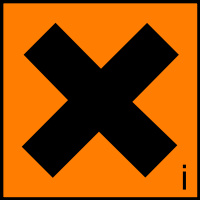|
Concentration
|
10 mg/mL in methyl acetate
|
|
Empirical Formula (Hill Notation)
|
C20H30O4
|
|
Purity
|
~95% (HPLC)
|
|
Flash Point
|
-9 °C
|
|
Flash Point
|
15.8 °F
|
|
GHS Pictograms
|

|
|
GHS Pictograms
|

|
|
GHS Signal Word
|
Danger
|
|
GHS Hazard statements
|
H225-H319-H336
|
|
European Hazard Symbols
|
 Flammable (F) Flammable (F)
|
|
European Hazard Symbols
|
 Irritant (Xi) Irritant (Xi)
|
|
MSDS Link
|
Download
|
|
Personal Protective Equipment
|
Eyeshields, Faceshields, full-face respirator (US), Gloves, multi-purpose combination respirator cartridge (US), type ABEK (EN14387) respirator filter
|
|
GHS Precautionary statements
|
P210-P261-P305 + P351 + P338
|
|
RID/ADR
|
UN 1231 3/PG 2
|
|
Risk Statements
|
11-36-66-67
|
|
Safety Statements
|
16-26
|
|
Storage Temperature
|
-20°C
|
|
Supplemental Hazard Statements
|
Repeated exposure may cause skin dryness or cracking.
|
|
Hazard Class
|
3
|
|
UN Number
|
1231
|
|
Packing Group
|
2
|
|
German water hazard class
|
2
|